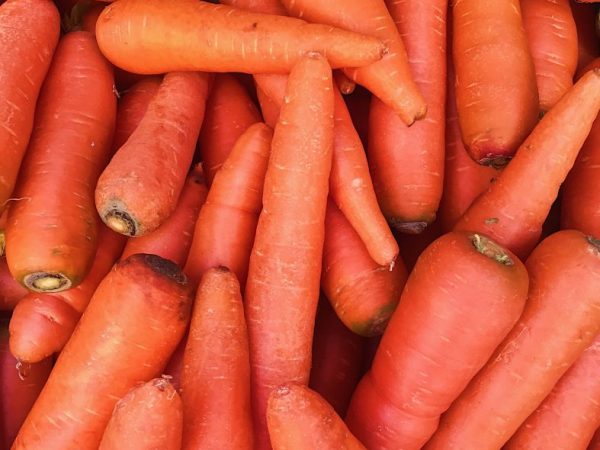Characteristics of the root system of carrots
Carrots are a root vegetable and belong to the celery family. Having identified the features of the root system of carrots, gardeners will be able to understand how to grow a crop and care for it.

Characteristics of the root system of carrots
Carrot structure
The structure of carrots is simple. The vegetable is rich in vitamins, especially a lot of A (carotene). The aroma and taste depends directly on the percentage of essential oil in the composition. The rhizome can reach depths of up to 2 m.
Weight depends on the variety itself, usually one vegetable reaches about 200 grams.
The length of carrots can be up to 30 cm. The fruit consists of a skin and a stem, which is called wood.
Rosette - leaves that are above the ground. The vegetable has an inflorescence (multi-ray). The plant is self-pollinated. Seed is collected from the foliage, which is then used as planting material.
The harvest time of the crop directly depends on the quality of the seeds and their preservation. The culture is late-growing. The inflorescence has up to 60 flowers maximum.
Root
The root has many functions:
- the plant receives the necessary nutrients;
- there is a supply of vitamins at the root;
- thanks to him the bush breathes;
- releases various vitamins and minerals into the soil.
The culture has a tap root, the same as that of clover, or sorrel. A potato, for example, does not have a root, but a tuber. The vegetable fruit itself is a thickening of the root as well as the stem. In order for the root to develop correctly, a number of conditions are met.
Temperature and light
The culture is resistant to cold weather, the sprouts begin to grow already at 5 ° C. The higher the temperature, the faster the seeds will begin to germinate.
For the root, a comfortable soil temperature is up to 19 ° C. For an umbrella - 25 ° C. Temperature changes negatively affect the entire plant.
There should be long daylight hours and good lighting. At the same time, the rules of timely thinning are observed.
Moisture and soil
The root crop easily tolerates dry days, but in order for the root crop to develop actively, watering is carried out regularly. Moisture in the soil should be up to 80%.

Growing good carrots is not difficult
Actively watered during periods:
- sowing;
- when the foliage is actively developing, and the root is compacted.
If there is little moisture, the root is formed incorrectly, the fruits crack and harden. The taste also changes - bitterness appears.
The soil is sandy, on heavy crops it grows poorly. The composition of the soil depends on how the vegetable will turn out in appearance and taste.
Root composition
The root vegetable contains a huge amount of vitamins, therefore it is used in many dishes and consumed in any form.
The vegetable contains:
- pectins;
- cellulose;
- starch;
- lecithin;
- glucose;
- carotene.
In addition to these substances, it contains vitamins A, E, K, PP, B6, B1, B2, D, N. Minerals - iron, a considerable composition of iodine, copper and potassium.
In medicine, besides the vegetable, its foliage and seeds are also used. For example, with kidney disease.
Interesting Facts
The parent of the culture is Afghanistan, where the carrots were originally purple, yellow and white. This orange-colored vegetable first appeared in the Netherlands. Brought out for the Orange dynasty, this is the royal family, which had a symbolic color of orange.Culture has its own city in California - Holtville. Every year, at the end of winter, a Festival dedicated to this particular culture is celebrated.
The vegetable has a good effect on the work of the heart, lowers cholesterol in the blood. The required dose per day for the normal functioning of the cardiovascular system - 1 pc.
The vegetable rosette is also eaten, and even dishes are prepared - salads and soups.
Conclusion
Features of the structure of the root system of carrots is that it reaches up to 2 m in depth, resistant to cold and drought. The root tuber accumulates the necessary nutrients, helps the whole plant to breathe and gives acid to the soil. This is a healthy vegetable that contains a large amount of vitamins and substances. The maximum length of the root crop is 30 cm.


